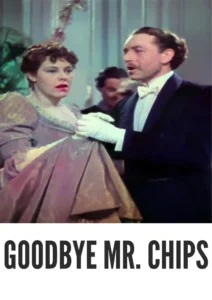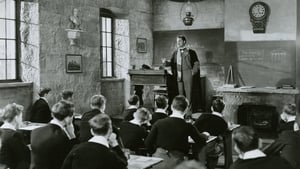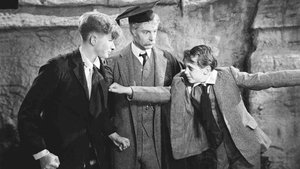Contact: info@alwanfilm.com
Video Sources 0 Views
- Watch trailer
- Goodbye Mr. Chips


Synopsis
Table of Contents
ToggleReview: Goodbye Mr. Chips 1939 Colorized – A Timeless Tale of Love and Legacy

Introduction
“Goodbye Mr. Chips” (1939) stands as a testament to the enduring power of storytelling and the impact of one teacher’s life on generations of students. In this article, we’ll delve into the significance of this classic film, exploring its themes of love, loss, and the transformative power of education.
Check The Full Colorized Movies List
Check Our Colorized Movies Trailer Channel
Understanding Goodbye Mr. Chips 1939 Colorized: Director, Cast, and Genre
Directed by the talented Sam Wood, “Goodbye Mr. Chips” (1939) showcases his ability to craft deeply emotional narratives that resonate with audiences of all ages. The film features a standout performance by Robert Donat in the title role, whose portrayal of the beloved schoolmaster captures the hearts of viewers with its warmth and sincerity. Blending elements of drama and romance, “Goodbye Mr. Chips” (1939) transports audiences to a world where the bonds of friendship and the pursuit of knowledge reign supreme.
Exploring the World of Goodbye Mr. Chips 1939 Colorized: Plot and Characters
At its core, “Goodbye Mr. Chips” (1939) follows the life of a dedicated schoolteacher, Mr. Chipping, whose unorthodox teaching methods and unwavering dedication leave a lasting impact on his students. As he navigates the ups and downs of life at Brookfield School, Mr. Chips forms deep connections with his pupils, teaching them not only the subjects in their textbooks but also the lessons of compassion, resilience, and integrity. Along the way, he encounters a colorful cast of characters who enrich his life and shape his legacy, culminating in a poignant tale of love and loss that spans generations.
The Art of Film Colorization
Film colorization serves as a transformative tool that enhances the visual experience of classic movies, breathing new life into timeless stories and captivating audiences with vibrant hues. By digitally adding color to black and white films, colorization allows viewers to immerse themselves in the rich tapestry of cinematic worlds, exploring every nuance and detail with fresh eyes and renewed appreciation.
Early Colored Films: A Brief History
The history of colored films traces its roots back to the early days of cinema, with filmmakers experimenting with various techniques to add color to their creations. From hand-tinted frames to early Technicolor processes, the evolution of colored film has been marked by innovation and ingenuity, paving the way for the development of modern colorization techniques that continue to captivate audiences to this day.
Goodbye Mr. Chips and Its Early Colored Version
The decision to release “Goodbye Mr. Chips” (1939) in a colorized format was met with both anticipation and apprehension. While some welcomed the opportunity to experience the film in vibrant color, others expressed concerns about the potential impact on its visual aesthetic. Nevertheless, the early colored version of “Goodbye Mr. Chips” (1939) offers viewers a fresh perspective on the timeless tale of love and legacy, enhancing its emotional resonance and captivating audiences with its luminous beauty.
The Debate Over Film Colorization
The debate over film colorization continues to divide audiences and critics alike, with proponents praising its ability to breathe new life into classic movies and introduce them to a new generation of viewers, while detractors argue that it compromises the artistic integrity of the original work and diminishes its historical significance. As the debate rages on, filmmakers and audiences alike are left to ponder the merits and drawbacks of colorization in the ever-evolving landscape of cinema.
Examining Goodbye Mr. Chips as an Early Colored Film
As with any colorized classic, the impact of colorization on “Goodbye Mr. Chips” (1939) is a matter of personal interpretation. Some may argue that it enhances the film’s visual appeal and immerses viewers in its world, while others may feel that it detracts from the stark beauty of the original black and white version. Regardless of one’s stance on the issue, there’s no denying the enduring power of “Goodbye Mr. Chips” (1939) as a timeless tale of love and legacy that continues to capture the hearts of audiences around the world.
Influence and Legacy: Goodbye Mr. Chips 1939 Colorized’ Impact on Cinema
“Goodbye Mr. Chips” (1939) has left an indelible mark on the world of cinema, inspiring countless filmmakers and captivating audiences with its timeless tale of love and legacy. From its unforgettable performances to its sweeping cinematography, the film continues to resonate with viewers of all ages, reaffirming its status as a beloved classic of the romantic drama genre.
Director’s Cinematic Legacy: Beyond Goodbye Mr. Chips 1939 Colorized
Sam Wood’s influence extends far beyond “Goodbye Mr. Chips” (1939), with a diverse body of work that continues to captivate audiences around the globe. From “A Night at the Opera” to “Pride of the Yankees,” Wood’s films are celebrated for their wit, charm, and emotional depth, solidifying his legacy as one of the preeminent directors of Hollywood’s Golden Age. Through his groundbreaking work, Wood has left an indelible imprint on the world of cinema, inspiring generations of filmmakers to follow in his footsteps.
Themes Explored in Goodbye Mr. Chips 1939 Colorized
“Goodbye Mr. Chips” (1939) explores a myriad of themes, from the transformative power of education to the enduring legacy of love and friendship. Through its richly drawn characters and poignant storytelling, the film invites viewers to ponder the complexities of the human experience and the profound impact that one individual can have on the lives of others. As audiences immerse themselves in the world of “Goodbye Mr. Chips” (1939), they are reminded of the timeless truths that bind us together and the enduring power of love to overcome even the greatest of obstacles.
Reception and Controversy Surrounding Goodbye Mr. Chips 1939 Colorized
Upon its release, “Goodbye Mr. Chips” (1939) received widespread critical acclaim, with many praising its heartfelt performances, tender romance, and timeless themes. However, the decision to release the film in a colorized format sparked debate among purists, reigniting the age-old discussion surrounding film preservation and artistic integrity. Despite the controversy, “Goodbye Mr. Chips” (1939) remains a beloved classic that continues to resonate with audiences of all ages, reaffirming its status as a timeless masterpiece of the romantic drama genre.
Where to Watch Goodbye Mr. Chips 1939 Colorized Online
For those eager to experience the timeless magic of “Goodbye Mr. Chips” (1939), the film is readily available on popular streaming platforms such as Netflix, Amazon Prime, and Hulu. Whether you choose to watch it in its original black and white format or the early colored version, “Goodbye Mr. Chips” (1939) promises to transport you to a world of love, laughter, and legacy that will stay with you long after the credits roll.
FAQs About Goodbye Mr. Chips 1939 Colorized
Q: Is “Goodbye Mr. Chips” (1939) based on a true story? A: No, “Goodbye Mr. Chips” (1939) is a fictional tale adapted from the novella of the same name by James Hilton. While the story draws inspiration from Hilton’s own experiences as a schoolboy, its characters and plot are products of the author’s imagination rather than historical documentation.
Q: Who are the main actors in “Goodbye Mr. Chips” (1939)? A: “Goodbye Mr. Chips” (1939) features a standout performance by Robert Donat in the title role, alongside a talented supporting cast that includes Greer Garson, Terry Kilburn, and John Mills.
Q: What awards did “Goodbye Mr. Chips” (1939) win? A: “Goodbye Mr. Chips” (1939) received critical acclaim upon its release, earning seven Academy Award nominations and winning one for Best Actor (Robert Donat). The film’s heartfelt performances and timeless storytelling continue to resonate with audiences of all ages, reaffirming its status as a beloved classic of the romantic drama genre.
Q: Why was “Goodbye Mr. Chips” (1939) released in a colorized format? A: The decision to release “Goodbye Mr. Chips” (1939) in color was made to introduce the film to a new generation of viewers and enhance its visual appeal for modern audiences. While the choice to colorize the film sparked debate among purists, it ultimately allowed “Goodbye Mr. Chips” (1939) to reach a wider audience and ensure its continued relevance in the annals of cinematic history.
Conclusion
As we reflect on the enduring legacy of “Goodbye Mr. Chips” (1939), let us celebrate its status as a timeless masterpiece that continues to captivate audiences with its heartfelt performances, tender romance, and timeless themes. Whether viewed in its original black and white format or the early colored version, “Goodbye Mr. Chips” (1939) remains a shining example of the power of cinema to inspire, entertain, and provoke thought.
So, whether you’re a seasoned cinephile or a casual moviegoer, take a moment to revisit “Goodbye Mr. Chips” (1939) and experience the magic of love, laughter, and legacy as only Hollywood’s Golden Age can deliver. For in the timeless tale of Mr. Chips and his enduring impact on generations of students, you’ll find a treasure trove of wisdom and wonder that will stay with you long after the final farewell.













